
Hirudo medicinalis, the European medicinal leech, is one of several species of leeches used as "medicinal leeches".

Colchicaceae is a family of flowering plants that includes 15 genera with a total of about 285 known species according to Christenhusz and Byng in 2016.

In biological taxonomy, the type genus is the genus which defines a biological family and the root of the family name.

Haemadipsidae are a family of jawed leeches. They are a monophyletic group of hirudiniform proboscisless leeches. These leeches have five pairs of eyes, with the last two separated by two eyeless segments. The family is monotypic, containing only the subfamily Haemadipsinae, though as the family can apparently be divided into two or three distinct lineages, at least one of the proposed splits, while not a distinct family, might be a valid subfamily.
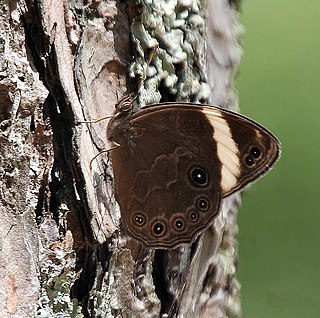
Lethe is a butterfly genus from the subfamily Satyrinae in the family Nymphalidae. The genus was erected by Jacob Hübner in 1819. It includes the treebrowns, woodbrowns, foresters and their relatives. The species in the genus Lethe occur in temperate-tropical southern and eastern Asia, up to Indonesia and in North America.
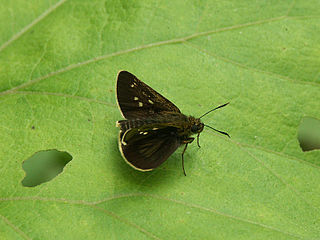
Thoressa is a genus of skipper butterflies erected by Charles Swinhoe in 1913. They are commonly known as "aces" or "ace butterflies". The genus is endemic to Southeast Asia with many species endemic to China.

In biology, taxonomic rank is the relative level of a group of organisms in an ancestral or hereditary hierarchy. A common system of biological classification (taxonomy) consists of species, genus, family, order, class, phylum, kingdom, and domain. While older approaches to taxonomic classification were phenomenological, forming groups on the basis of similarities in appearance, organic structure and behaviour, methods based on genetic analysis have opened the road to cladistics.
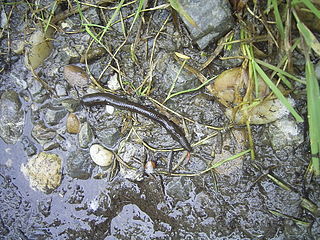
The Hirudiniformes are one of the currently-accepted suborders of the proboscisless leeches (Arhynchobdellida). Their best-known member is the European medical leech, Hirudo medicinalis, and indeed most of the blood-sucking "worms" as which leeches are generally perceived belong to this group. In general, though some leeches suck blood, many are predators which hunt small invertebrates.

Leeches are segmented parasitic or predatory worms that comprise the subclass Hirudinea within the phylum Annelida. They are closely related to the oligochaetes, which include the earthworm, and like them have soft, muscular segmented bodies that can lengthen and contract. Both groups are hermaphrodites and have a clitellum, but leeches typically differ from the oligochaetes in having suckers at both ends and in having ring markings that do not correspond with their internal segmentation. The body is muscular and relatively solid, and the coelom, the spacious body cavity found in other annelids, is reduced to small channels.

Arius manillensis is a species of marine catfish endemic to the island of Luzon, Philippines. It is commonly known as the Manila sea catfish or kanduli. It is fished commercially.

Hirudo is a genus of leeches of the family Hirudinidae. It was described by Carl Linnaeus in his landmark 1758 10th edition of Systema Naturae.

Hirudinidae is a family of leeches belonging to the order Arhynchobdellida.
Anna J. Phillips is an American Research Zoologist and curator of Clitellata and Cestoda at the National Museum of Natural History's Department of Invertebrate Zoology. As a parasitologist her research focuses on leeches and tapeworms, by studying their diversity, relationships, and host associations. She has traveled all over the world with her fieldwork to study the diversity of these invertebrates on a long range.
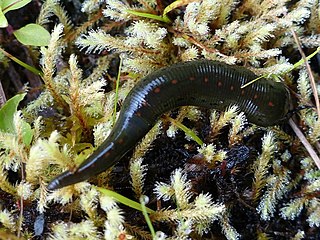
Macrobdella is a genus of leeches native to freshwater ecosystems of North America, especially Canada, Mexico, and the United States. The genus is commonly referred to as North American medicinal leeches.

Limnatis is a genus of freshwater leeches, recorded from Europe, Africa and western Asia. Authorities disagree whether this genus should be placed in the family Hirudinidae or Praobdellidae.
Macrobdellidae is a family of Nearctic leeches belonging to the order Arhynchobdellida.
Philobdella is a genus of Nearctic leeches belonging to the family Macrobdellidae.
Poecilobdella is a genus of Asian leeches belonging to the family Hirudinidae. Together with the genus Hirudinaria, they have been called Asian buffalo leeches.
Hirudinaria is an accepted genus of fungi in the phylum Ascomycota. Species are recorded from southern Europe.
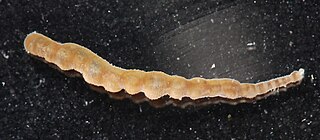
Myzobdella lugubris, the crab leech, is a species of jawless leech widespread in North America, especially in central and Eastern Canada. It is an ectoparasite of fish and crustaceans, and is responsible for several dangerous conditions in fish, including lesions infected by bacteria and fungi and possibly viral hemorrhagic septicemia. It lays its egg capsules on crabs and possible other arthropods, which then disperse the eggs.













